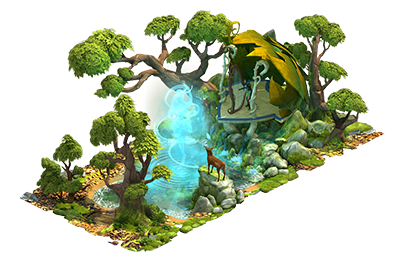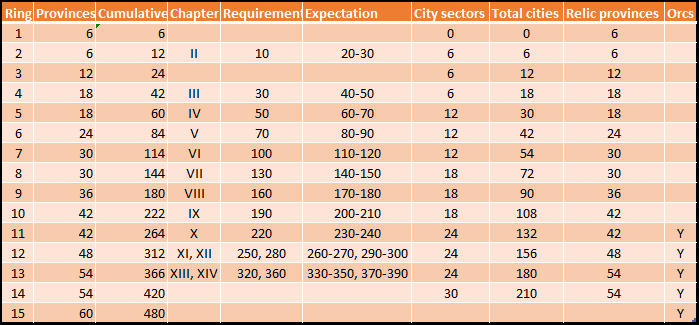Mykan
Oh Wise One

Contents
- Introduction
- Races
- Starting out
- Town design
- Boosted V non-boosted
- Design by era
- Boosted V non-boosted
- Fellowships and visitation
- Culture
- Trading
- Game strategy
- Hotkeys
- Provinces
- Fighting Guide
- General tips
- Tournaments
- Magic Academy and Spells
- Wonders
- Guest Races
- Diamonds
- What to do if you are "stuck"
- Other resources
- Mainline Quests
- Repeatable Quests
- Glossary
- Updates and Feedback
Welcome to the world of Elvenar, upon starting a city you will have selected one of 2 races; Humans or Elves. This guide is generic for both races unless specified otherwise. You will also find lots of valuable information from the forum (beta and US sites), wiki and Gems of Knowledge.
This guide is designed to take you through various aspects of the game and apply the raw information about buildings, troops and other game components into a successful and thriving city that matches your own unique approach and style.
Races
The two races are very similar in many ways but there are unique aspects for each race.
- The technology tree is unique for the first 5 chapters.
- Residences and factories are very similar but there is a difference on when certain things are unlocked and even what levels each race can build up to before requiring a new technology.
- The armies are also different, typically an Elven army is more defensive in nature and the Humans are more offensive in nature.
When you first begin the game can be a bit daunting and there is a lot of information available that can seem overwhelming. A few key aspects to understand and help you out:
- There is no one way to play or on correct style of play. Any advice or guides should be put through your own filter for how you like to play. Stay true to your style and you will have a great town to be proud of
- Take things one step at a time, learn about what you need in the town right now and try not to read to far ahead. Great stuff to know early:
- Basic town design
- Exploration, technology and its impact on combat
- Boosted goods
- Fellowships
- Combat is at its most difficult in the first 2-5 chapters. Don't be dismayed it does get much easier.
- Join a fellowship - be part of a team and see the benefits. Join an established group so there are experienced people who can help teach you.
Everyone has to work out how exactly to build their town. The frequency of play and purchasing of diamonds
 for speciality buildings all impact a town and what is needed, making each town unique. The slight variations between the 2 races and different manufactory buildings all add to the uniqueness of each town's design. Wonder and event buildings also add to the customisation of each town.
for speciality buildings all impact a town and what is needed, making each town unique. The slight variations between the 2 races and different manufactory buildings all add to the uniqueness of each town's design. Wonder and event buildings also add to the customisation of each town.As a general guide a basic town layout would be:
- 6-9 workshops. If playing mostly every 9 hours go for 8 workshops.
- 2-3 armories you can vary this up or down to suit you, if you do more you will likely need an extra workshop. You will want 2 armouries by the orc era even if planning to negotiate (refer Orcs).
- Residences start with 10 and work up to 20 and continue as needed. Your gold and population needs will determine the number you need ultimately. This varies a lot as you upgrade buildings sizes and if you buy diamonds for special buildings. You might decrease residence numbers as the size of the buildings increase but you are continually increasing the number of squares allocated for residences.
- Goods manufactories vary by race and good so a guide based on factory numbers can vary from the guide to what you need. The goods produced by square for each factory is almost identical regardless of type and race. Ideally a minimum of 40 squares of factories for each type of basic, crafted and magical good is the aim. This will allow you to fight, negotiate or both and have sufficient goods for average province expansion. Information below is based on building boosted good factories only (see boosted v non-boosted).


 Basic good factories - 40 squares (usually 4-6 factories)
Basic good factories - 40 squares (usually 4-6 factories)

 Crafted good factories - 40 squares (usually 2-3 factories)
Crafted good factories - 40 squares (usually 2-3 factories)

 Magical good factories - 40 squares (usually 2-3 factories)
Magical good factories - 40 squares (usually 2-3 factories)
- Monitor your coins, supplies and goods, if they are not increasing a little each day then upgrade buildings or add temporary buildings
- Don’t be afraid to delete buildings
- Upgrade old cultural buildings for new ones, check that the culture per square is higher for the building you plan to place
- Don’t be afraid to keep available space to adapt to changes, new opportunities, and guest races. If your town runs well without all the space occupied using up all the space with more of the same can create future challenges. Fill the space with temporary buildings you plan to remove later to meet future needs..
Starting towns tend to have more actual factory numbers then an advanced town but often the squares occupied is very similar. An era 1 town would look more towards 20 squares of factory space initially and build up towards 40 squares, likely in late era 3.
People visiting your town start at your town hall, try to place the buildings you want them to boost close to the town hall so they are easier to find and faster to help. Better culture buildings closer to main hall for example.
Roads generally offer very little, so plan your town to minimise the number of roads. Consider:
- Culture buildings and builders hut do not need roads
- Buildings only need a single road
- You can fit more buildings per road by placing the road along the short edge of a building rather than the long edge
- Often placing roads in rows or columns lets you group similar buildings and use less roads thus more space for buildings
- Upgrade roads when able for the increased culture, often a single 1x1 culture building gives more culture than a road so you can put culture objects at the end of roads
Elven architect, a fan website with planning tools for the game that can help you plan your town.
Last edited:

 Dear forum visitor,
It looks as though you have not registered for a forum account, or are not signed in. In order to participate in current discussions or create new threads, you will need to register for a forum account by clicking on the link below.
Dear forum visitor,
It looks as though you have not registered for a forum account, or are not signed in. In order to participate in current discussions or create new threads, you will need to register for a forum account by clicking on the link below.
